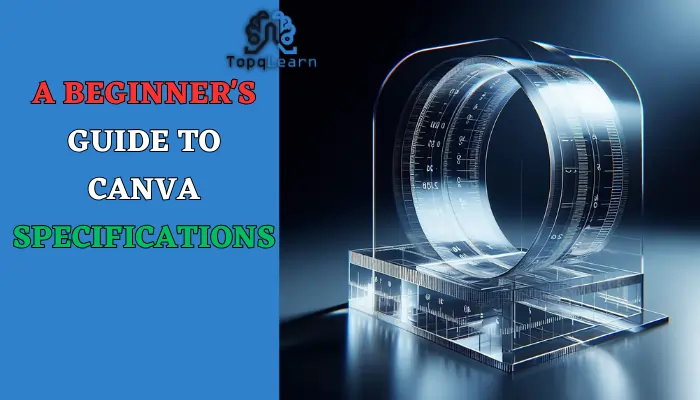Welcome, budding designers and creative enthusiasts! If you’re just starting your design journey, you’ve probably heard of Canva, the user-friendly online graphic design platform.
One key aspect of creating visually stunning designs in Canva is understanding and leveraging its specifications. In this article, we’ll break down the basics of Canva specifications in simple terms, helping you navigate the world of pixels, dimensions, and formats.
Understanding Canva Specifications
1.Design Specifications
Canva has specific dimensions for designs. The minimum dimension is 40 x 40 pixels, and the maximum dimension is 8000 x 3125 pixels. These dimensions are important to ensure your designs fit well in the intended space
2. Canvas Dimensions:
The canvas is like your digital canvas or page where you create your design. Canva allows you to customize the dimensions to suit your project. Common dimensions include:
- Instagram Post: 1080 x 1080 pixels
- Facebook Cover: 820 x 312 pixels
- YouTube Thumbnail: 1280 x 720 pixels
3. Elements:
Canva provides a wide array of elements like text, images, and icons. Understanding their specifications ensures your design looks crisp and professional.
- Text: Customize font size, style, and color.
- Images: Upload high-resolution images for clarity.
4. File Formats:
When it comes to downloading your masterpiece, Canva offers various file formats. Choose the one that suits your needs.
- PNG: Ideal for images with transparent backgrounds.
- JPEG: Great for photos and images without transparency.
- PDF: Perfect for print-ready documents.
- Videos: MOV, GIF, MP4, MPEG, MKV, or WEBM file format. The file size should be less than 1GB
5. Color Codes:
Consistent color is key in design. Canva provides HEX codes for colors used in your design. You can easily match and replicate colors across elements.
6. Export Quality:
Ensure your design maintains quality when exported. Canva allows you to select the export quality, balancing file size and image clarity.
Technical Requirements
To use Canva effectively, your computer needs to meet certain technical requirements. Here are the minimum specifications recommended by Canva:
- Operating System: Canva works on the latest versions of Windows, macOS, and Linux.
- Internet Connection: A stable internet connection is required to avoid saving problems while designing.
- Processor: Canva recommends a dual-core processor or higher.
- RAM: At least 4GB of RAM is recommended to ensure smooth performance.
- Screen Resolution: A screen resolution of 1024 x 768 pixels or higher is recommended
Canva Specifications Quick Reference Table
Here’s a quick reference table summarizing some essential Canva specifications:
| Element | Specification |
|---|---|
| Canvas Dimensions | Customizable |
| Text | Font, size, color |
| Images | High resolution |
| File Formats | PNG, JPEG, PDF |
| Color Codes | HEX codes |
| Export Quality | Adjustable (Low to High) |
Conclusion
Mastering Canva specifications empowers you to create eye-catching designs tailored to various platforms. Experiment with different dimensions, explore elements, and pay attention to details like color and resolution to elevate your designs.
FAQs
Can I change the canvas dimensions after starting a design?
Yes, you can. Click on the “Resize” option in the top-right corner to modify the canvas dimensions.
How do I find the HEX code for a specific color in Canva?
Click on the color wheel icon, and the HEX code will be displayed. You can also manually enter HEX codes in the color picker.
What’s the difference between PNG and JPEG in Canva?
PNG supports transparency, making it suitable for logos and images with transparent backgrounds. JPEG is better for photographs and images without transparency.
Remember, the more you experiment and play around with Canva, the more comfortable and creative you’ll become. Happy designing!


